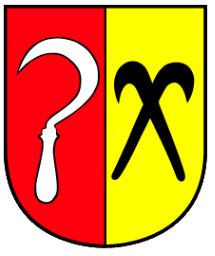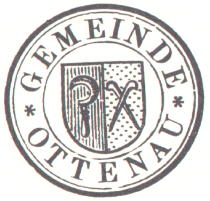Ottenau: Difference between revisions
Jump to navigation
Jump to search
Knorrepoes (talk | contribs) m (Text replacement - "===Official blazon=== (de)" to "===Official blazon=== *(de)") |
Knorrepoes (talk | contribs) m (Text replacement - "===Official blazon=== *(de) " to "{| class="wikitable" |+Official blazon |- |'''German''' | ") |
||
| Line 9: | Line 9: | ||
[[File:ottenau1.jpg|center|Wappen von {{PAGENAME}}]] | [[File:ottenau1.jpg|center|Wappen von {{PAGENAME}}]] | ||
= | {| class="wikitable" | ||
|+Official blazon | |||
|- | |||
|'''German''' | |||
| In gespaltenem Schild vorne in Rot ein silbernes Rebmesser, hinten in Gold zwei schräggekreuzte schwarze Flößerhaken | |||
===Origin/meaning=== | ===Origin/meaning=== | ||
Revision as of 09:45, 5 July 2022
This page is part of the German heraldry portal Deutsche Wappensammlung |
Heraldry of the World |
|
German heraldry:
|
Selected collector's items from Germany:
|
OTTENAU
State : Baden-Württemberg
District (Kreis) : Rastatt
Incorporated into : 1935 Gaggenau
| German | In gespaltenem Schild vorne in Rot ein silbernes Rebmesser, hinten in Gold zwei schräggekreuzte schwarze Flößerhaken
Origin/meaningThe oldest seal of Ottenau dates from 1571 and already shows a shield, but the it is too damaged to determine the composition. The second known seal dates from 1601 and shows a divided shield with a sickle and two hooks. The sickle represents the viticulture, the hooks are boat-hooks, symbolising fishing on the Rhine. The same arms appear in the seals from the 19th century and the combination was officially approved as arms in November 1910.
Contact and SupportPartners: Your logo here ?
© since 1995, Heraldry of the World, Ralf Hartemink Literature : Zier and Fütterer 1966. |














